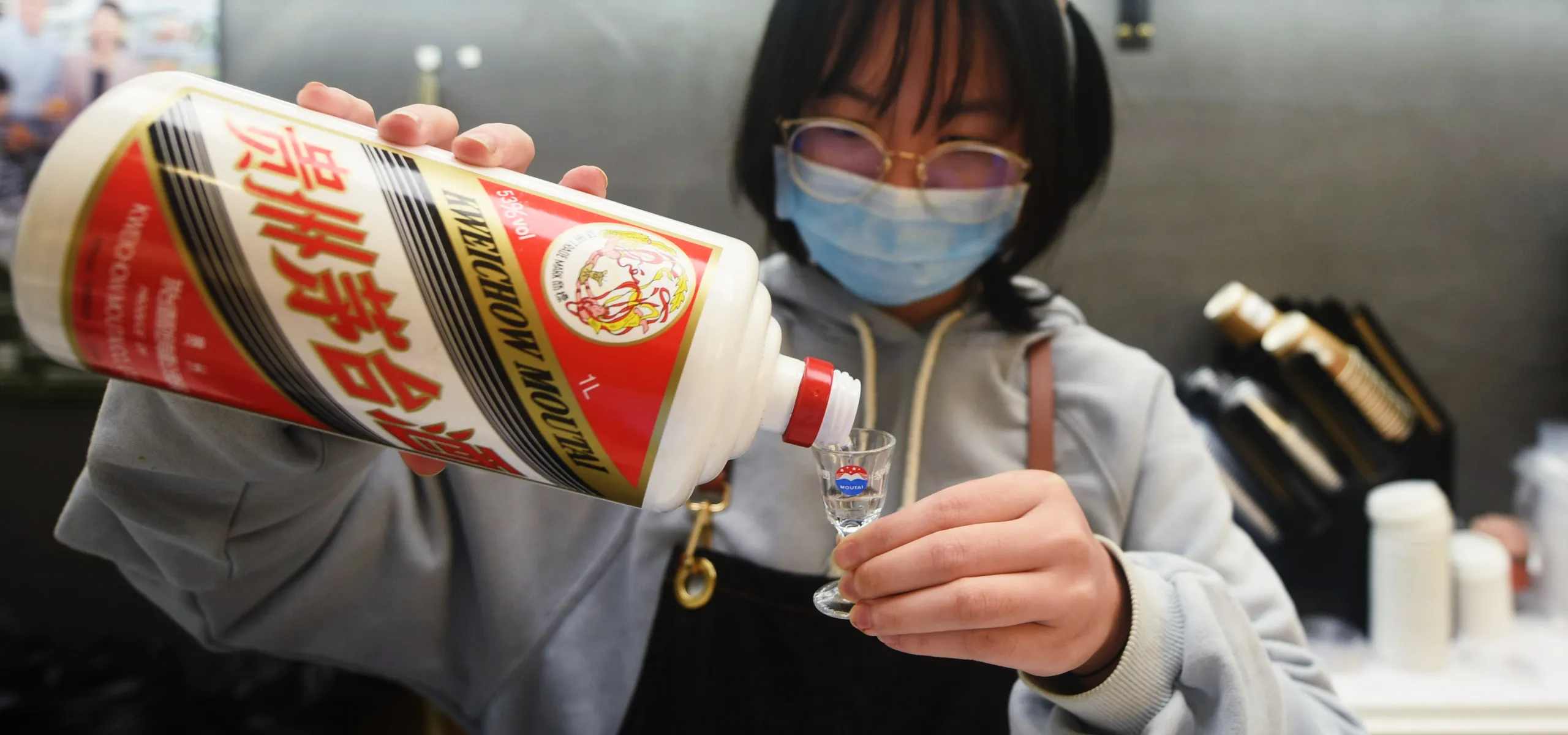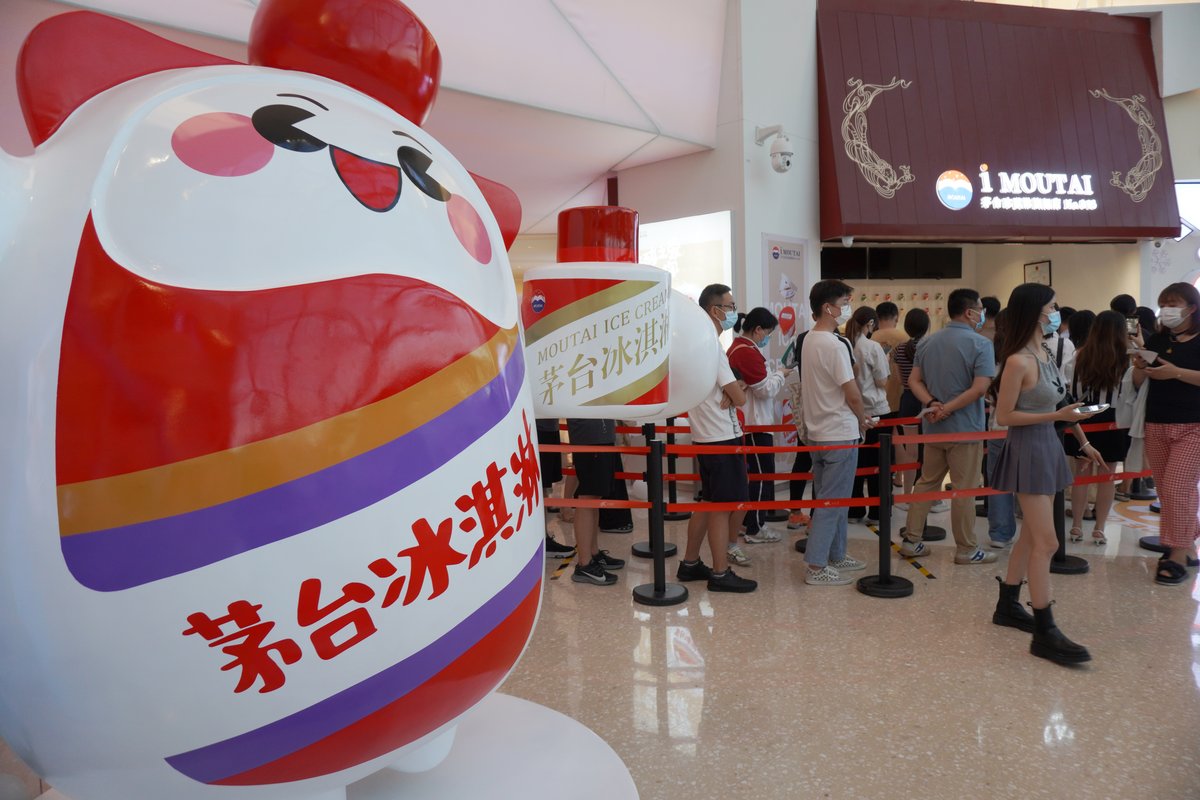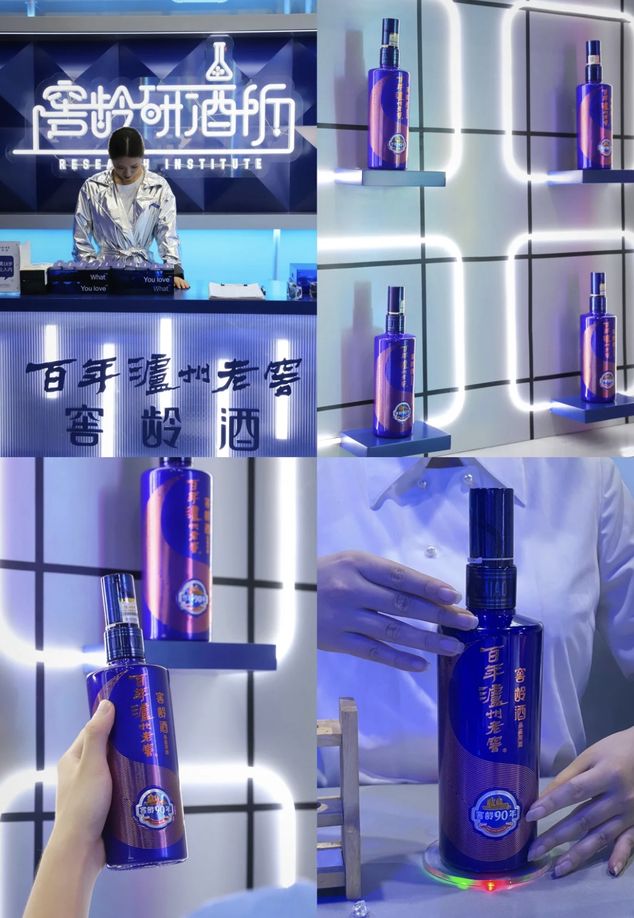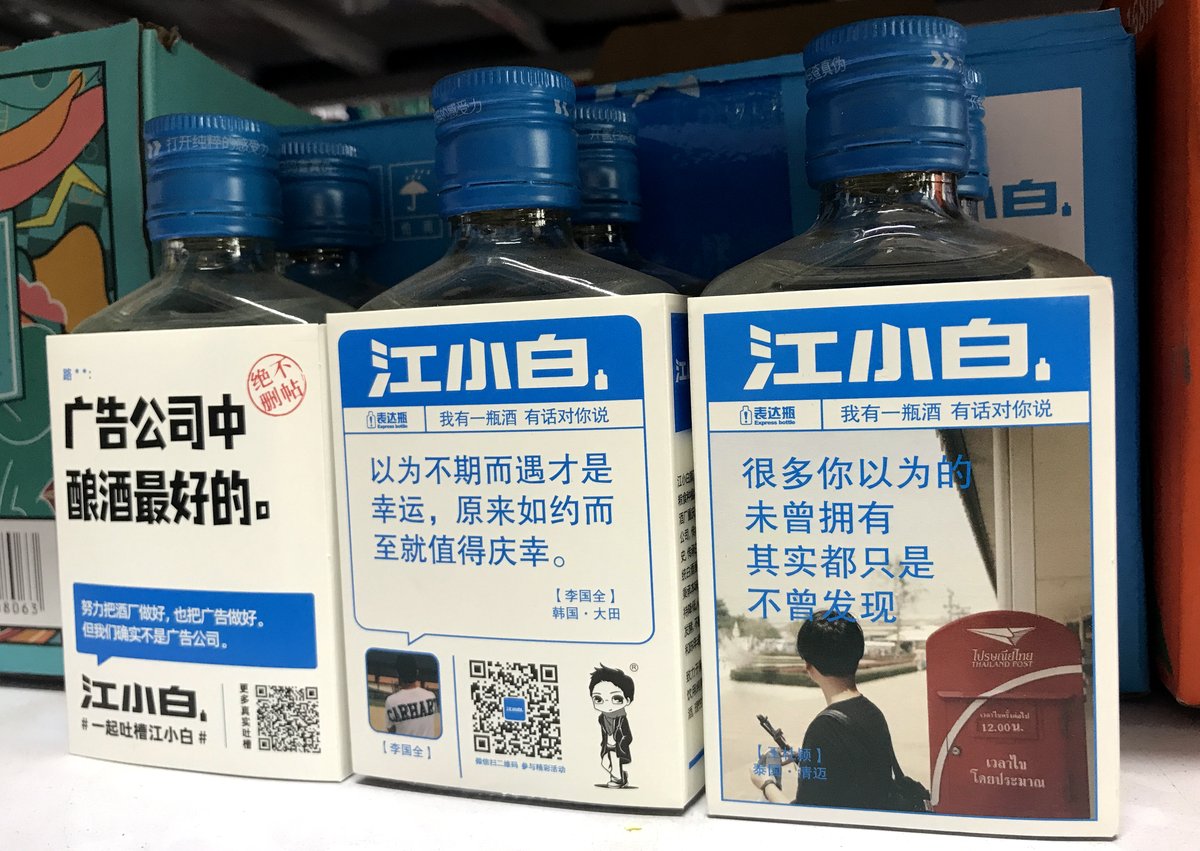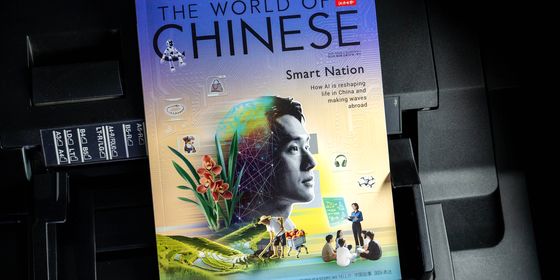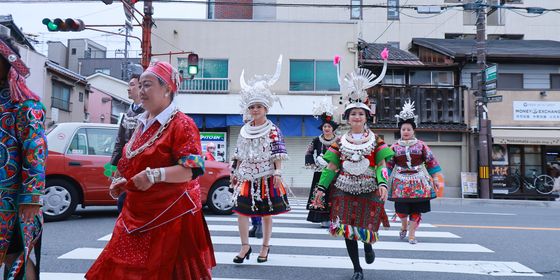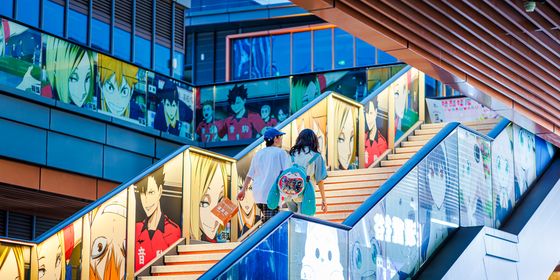China’s traditional liquor was supposed to be out of touch, but it’s proving the doubters wrong by adapting to the social media age
When young, trendy Chinese gather to drink these days, they sip on one of the country’s oldest liquors. “Baijiu is the best catalyst to get people to say what they really think. All my stress and unhappiness can be dissolved in a glass,” says Liu Ding, a 28-year-old salesperson from Beijing. “Not every alcohol can achieve this. We have to drink a lot of beer just to get tipsy, which also makes us bloated, and we’re not used to wine. So baijiu is our go-to alcohol.”
Baijiu (白酒), a fiery 40 to 60 percent alcohol sorghum-based Chinese liquor with centuries of history, was supposed to have fallen out of fashion with young drinkers like Liu. For decades, it had a reputation as the drink of the middle-aged, brought out during business banquets in which men smoked, toasted, and made deals. That posed a problem for baijiu brands—many assumed they would slowly lose their market share to beer, wine, alcopops, and Western liquor brands that targeted younger drinkers.
But baijiu is unexpectedly flourishing again, with Chinese youth finding the drink more attractive than ever. According to e-commerce giant JD.com’s “Report on Baijiu Consumption during the First Quarter 2022,” 21- to 30-year-olds accounted for 23 percent of baijiu consumers on the platform in the first half of this year, up 3 percentage points year on year; while 41- to 50-year-olds accounted for 21 percent, down 1 percentage point from the previous year. The largest group of consumers are 31- to 40-year-olds, who have relatively higher incomes and a more stable living environment, but younger generations are gaining an unexpected taste for the liquor their dads traditionally sipped.
Brands have adapted to these changing consumer habits, taking pains to market their drinks not just to wealthy middle-aged people, but to youngsters active on social media and on the hunt for new trends. They have unveiled crossover products, like baijiu-flavored confectionery and even baijiu-themed hotels, and tried to break down the barriers of drinking tradition and etiquette to promote the idea that baijiu is a symbol of fun and can resonate with more relaxed drinking environments younger drinkers tend to enjoy.
“I used to think baijiu was ‘traditional’ and ‘historical,’ belonging only to people like my father and grandfather, and almost irrelevant to young people,” says Zhang Yinglong, a 23-year-old student in Jiangsu province who drinks baijiu with friends or even alone sometimes. He tells TWOC that recent marketing campaigns by different brands have helped change his mind, citing baijiu-flavored ice cream released by Kweichow Moutai, China’s largest baijiu brand founded in 1951, and slogans used by newer brands like Jiangxiaobai that reflect what young people “are thinking and what we want to express.”
Moutai, which formed as a state-owned company when several local distilleries merged together, is one of China’s oldest and perhaps most traditional baijiu brands, known for its expensive vintages and special editions. Its flagship 500-milliliter bottle, named Feitian Moutai, sells for around 1,499 yuan. For years it has been considered a high-end liquor served at weddings and banquets, or given as gifts at business meetings and at government summits—Mao famously served US President Richard Nixon Moutai when he visited the PRC in 1972. But even this “time-honored brand” has evolved to keep pace with youth trends and the power of virality on Chinese social media. The company’s ice cream, released in May 2022 in collaboration with Mengniu Dairy, took the internet by storm. Originally priced at 66 yuan, boxes of the ice cream rapidly appeared on the internet for nearly 50 times that.
The company, which is majority owned by the Guizhou provincial government, has also focused on marketing on TV and films favored by young audiences. In the 2017 film Wolf Warrior 2, one of China’s highest-grossing movies of all time, one scene shows the hero finishing a whole bottle of Moutai baijiu in one go.
The same year, Luzhou Laojiao, a distillery that dates to 1573, developed a special 22 percent alcohol peach-flavored baijiu based on Eternal Love, a novel and TV drama popular with young audiences. Luzhou Laojiao partnered with the TV show to have the drink appear in scenes throughout the show, driving many young viewers to purchase it. In 2020, the company held a flash art installation in Chengdu, which quickly became an internet-famous site to tag on social media platforms like Xiaohongshu and Douyin (China’s TikTok).
New brands specifically targeting younger drinkers have also seen success. In 2022, Jiangxiaobai, a baijiu brand founded in 2012, collaborated with Mao Buyi, a 28-year-old singer and songwriter popular among Chinese youth. Mao’s story—he gave up his job as a nurse to pursue music and successfully participated in the TV talent show The Coming One despite suffering from performance anxiety—resonates with many young people who are also searching for direction in life. On Weibo, the hashtag “Mao Buyi endorses Jiangxiaobai” has been viewed nearly 150 million times since October 2022.
These shifts have resulted in rapid growth: Kweichow Moutai’s annual report showed revenue of 124.1 billion yuan in 2022, a year-on-year increase of over 16 percent. From 2010 to 2022, the company’s revenue increased tenfold, and its net profit rose from 5.05 billion yuan in 2010 to 52.55 billion yuan in 2021. The company is now China’s second most valuable company, with a total market value of 2.18 trillion yuan (as of April 2023), worth more than even internet giants Tencent and Alibaba.
Data from the China Alcoholic Drinks Association shows that, despite the Covid-19 pandemic impacting production and logistics, the cumulative sales revenue of baijiu in 2022 grew by 5 percent and profits by 71 percent compared to 2019.
While baijiu has gained popularity among Chinese youth in recent years, the drink’s roots lie in ancient history. Although the exact origins of baijiu are unclear, many historians believe the alcohol favored by Li Bai (李白), Du Fu (杜甫), and more of China’s best-known Tang dynasty (618 – 907) poets may have been a version of today’s baijiu. It seems to have been widely consumed in the Yuan dynasty (1271 – 1368), where the royal court also offered it to their ancestors during important ceremonies.
But tradition alone isn’t enough to sustain baijiu’s popularity. In a 2019 white paper titled ”China’s Alcohol Consumption Habits,” Hurun Research Institute found that while older consumer groups drink liquor mostly out of habit, young consumer groups drink for more emotional reasons.
Newer brands have responded. Jiangxiaobai, which uses a minimalist design, has a young bespectacled anime-inspired character as its logo and features quotes that resonate with disaffected youth on its bottles (for example, “only when your heart is full can you escape the monotony of life”), made almost 3 billion yuan in revenue in 2019, just seven years after it was founded. The brand has targeted consumers under 30 by sponsoring dance and graffiti competitions as well as music festivals. It produced baijiu-flavored confectionery even before Moutai, collaborating with Japanese candy brand Pocky. Jiangxiaobai also has a range of flavored baijiu, including grape and peach, which may be more suited to younger consumers who struggle with the strong fiery taste of traditional baijiu. It’s also affordably priced, at around 20 yuan per 100 milliliters.
The company has worked hard to dispel the connection between baijiu and traditional Chinese drinking etiquette, which puts many younger consumers off drinking. These drinking rules include specified seating arrangements based on seniority and who is hosting, and pressure to drink as attendees make multiple toasts to each other throughout a drinking session. “I can’t understand this fussy drinking culture, so I refused to drink baijiu before,” says Hu Zhanghu, a 26-year-old IT worker from Shanghai. “But I started to drink it after being introduced to Jiangxiaobai by my friends.” Hu feels relaxed drinking the brand with friends and has even begun to enjoy the taste.
Hu also enjoys baijiu mixed with Sprite, a concept many older drinkers frown upon but which Jiangxiaobai has encouraged. The company also launched an online marketing campaign around the hashtag “homemade Jiangxiaobai cocktails” in 2019, inviting netizens to share their favorite mixes, eliciting cocktails using soda, juice, and some tea beverages. One Douyin user named his Jiangxiaobai and Sprite mix “lover’s tears,” a phrase that quickly went viral—by the end of 2019 related videos on Douyin had gained over 100 million views and the topic had 40 million views on Weibo. “Baijiu brands like Jiangxiaobai break the stereotype of baijiu and attract us young people by meeting our emotional needs,” says Zhang, the student.
As baijiu’s popularity among youngsters has grown, other drinks have faded away. Sales of wine, for example, declined 12.4 percent in 2022 compared with 2021. In some ways, wine is suffering from tradition the same way many believed baijiu would. “For me, drinking wine has many complex procedures. Swirl the wine in your glass, sip and savor the wine and don’t gulp it down. It’s quite elegant, but I can’t have a blast,” says Liu Ding. In an interview with public WeChat account Weixun Qingbaoke in September 2022, Zhou Jinsong, executive chairman and secretary-general of the Sichuan Wine and Fruit Wine Industry Association, partly blamed a lack of innovation in the industry’s marketing for the slump.
Meanwhile, low-alcohol drinks (alcopops, for example) have failed to secure stable market share despite marketing directly to young Chinese. According to a 2021 report by 36Kr, a technology news and data website, alcopop brands struggle to turn first-time buyers into repeat customers. Competition is fierce, making it difficult for brands to differentiate themselves and leading to intense price wars that have damaged the perception of these types of drinks in the eyes of consumers.
Baijiu brands, on the other hand, are learning to leverage their tradition and reputation as China’s national drink and repackage this in ways young, social media-addicted consumers relate to. It’s worked so far for Hu, and he believes there may be more young Chinese drinking baijiu than we think: “Young people often say, ‘I don’t know how to drink baijiu’ or ‘I am allergic to alcohol,’ but I think there is a high chance that they just don’t want to drink it with the person they are speaking to.” In other words, they might avoid drinking with elderly male relatives at a banquet, but consume more than their fair share during a casual chat with friends.





